3 Ways to Stretch the "Muscle of the Soul," the Psoas
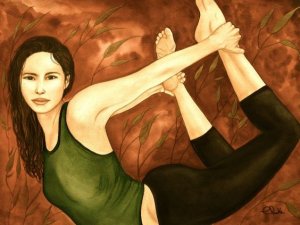

Written and verified by the psychologist Raquel Aldana
This muscle, which connects your spinal column and your legs, helps you walk on two feet. It makes it possible for you to pick up your legs and walk. A healthy psoas will also help with good posture, and makes room for all the internal structures in your body.
Eastern cultures have given it the name “the muscle of the soul” because of its relationship to the central nervous system. Being connected to your diaphragm, it plays a part in breathing.
We know that your breathing rate has a two-way relationship with your emotions. That’s why the psoas is the muscle that plays the role of sending oxygen to your brain.
The psoas, or the “muscle of the soul,” is seen as the spokesperson for emotions. Think of emotions that feel like “butterflies” or “knots” in your stomach.

Tension in your psoas affects your emotional health
Stress can cause tension in your psoas, which will either make it smaller or harder. Both of those things will lead to upper and lower back pain, digestive problems, painful menstruation, and more.
On the other hand, the stronger and more flexible the “muscle of the soul” is, the more vitality you’ll radiate. That’s because energy will be able to flow freely through your bones, muscles, joints, and organs..
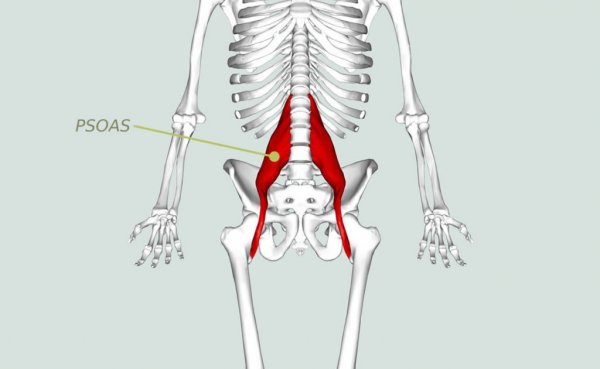
Exercises for relaxing the “muscle of the soul”
If you want to strengthen the psoas and make it more flexible, there are certain exercises and stretches you can do. As you can see in these images, the muscle starts at your T12 vertebra and extends down your five lower back vertebrae, finally connecting to the upper part of your thighbone (femur).
Practices like yoga focus on this muscle, because it helps you release unnecessary tension. It also lets you flow through truly freeing body movements that will help you reconnect with yourself.
Now let’s look at some exercises that will help you stretch and strengthen the “muscle of the soul.” But before we start to talk about them, just remember to hold them for a few seconds, and then repeat them with each leg. It’s a good idea to do them every day, specifically in the morning if possible.
1. Lunge
- Stand up with your legs separated at shoulder-width.
- Keep your back straight. This will help you keep your ab muscles tight.
- Take one step forward with your right foot.
- Drop your left knee towards the floor and slide it backwards until your entire left leg is stretched out.
- Rest your hands on your right knee and stay in that position for a few seconds.
- Stand up slowly, go back to the beginning pose, and do the same exercise with your other leg.
Variation: do the same exercise but using a stool, box, or seat the height of your knee so that you can rest it there and put all your weight forward. That way you can make sure you stretch your left leg all the way, and then repeat with the other leg.
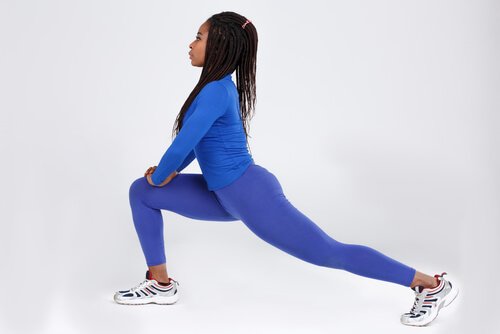
2. Spinal stretch
- Lay face up on a mat.
- Put your arms perpendicular to your body, in the shape of a cross. Your palms should touch the floor.
- Bring your right knee on top of your left knee, twist your hips, and rest on the ground. Your right leg should be at a right angle.
- Your left leg shouldn’t be flexed.
- Stay in that pose for a few seconds and then switch legs.
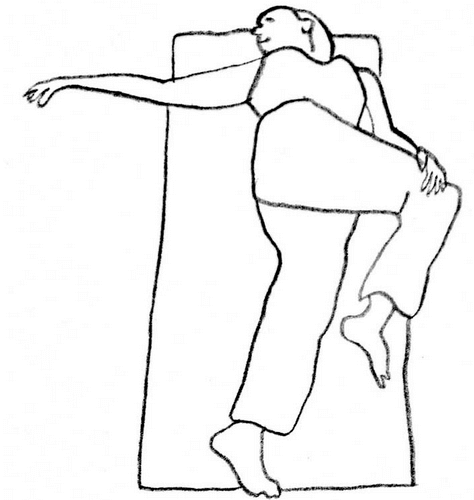
3. Chest to knee stretch
- Lay face up on a mat.
- Bring your right knee up to your chest and hold onto it with both hands. Then put some pressure on it to bring it closer.
- Don’t lift your left leg from the ground.
- Stay in this pose for a few seconds and then repeat it with the other leg.
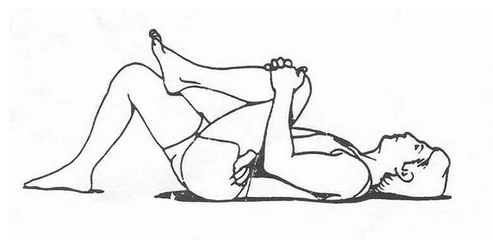
Making a daily habit out of these simple exercises will enhance your physical and psychological balance. Taking some time every day to fill yourself up with psychological oxygen isn’t something you can “put off for later.” Because in the end your well-being is something you should never postpone. Your life depends on it.
Principal image by Claudia Tremblay
This text is provided for informational purposes only and does not replace consultation with a professional. If in doubt, consult your specialist.








